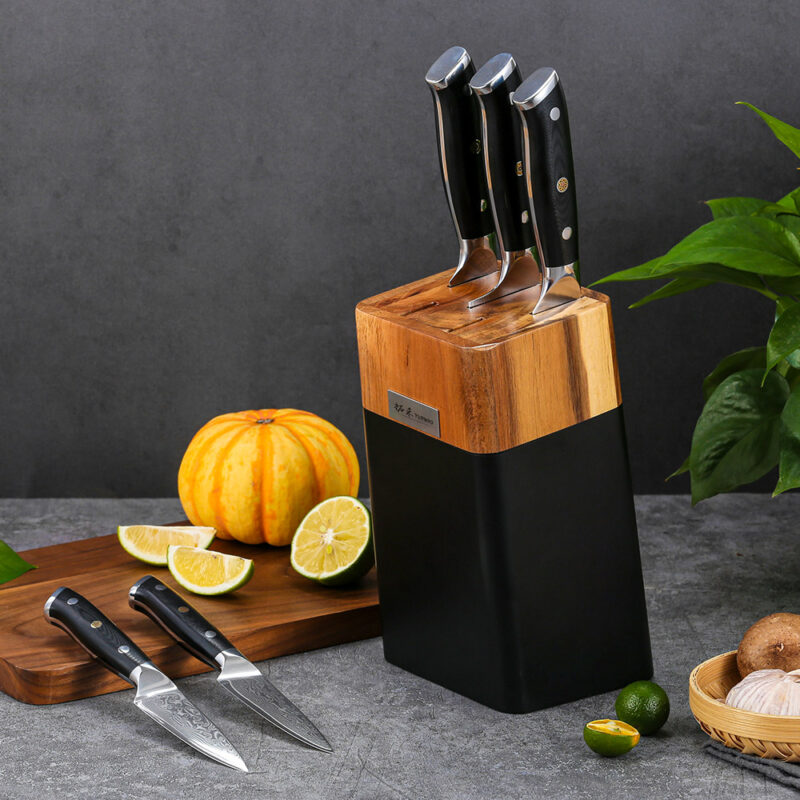Chef's Knives
Kitchen Knife Basics – The Best Commercial Damascus Knives Supply Store
Kitchen Knives & Cutlery
Professional knives are essential in most commercial kitchens, whether they’re boning knives, paring knives, bread knives, mezzalunas, or the near-ubiquitous chefs’ knives. Chunaghe carries an extensive selection of kitchen knives to ensure every chef can find one that sits right in his or her hand and is best suited to the task.
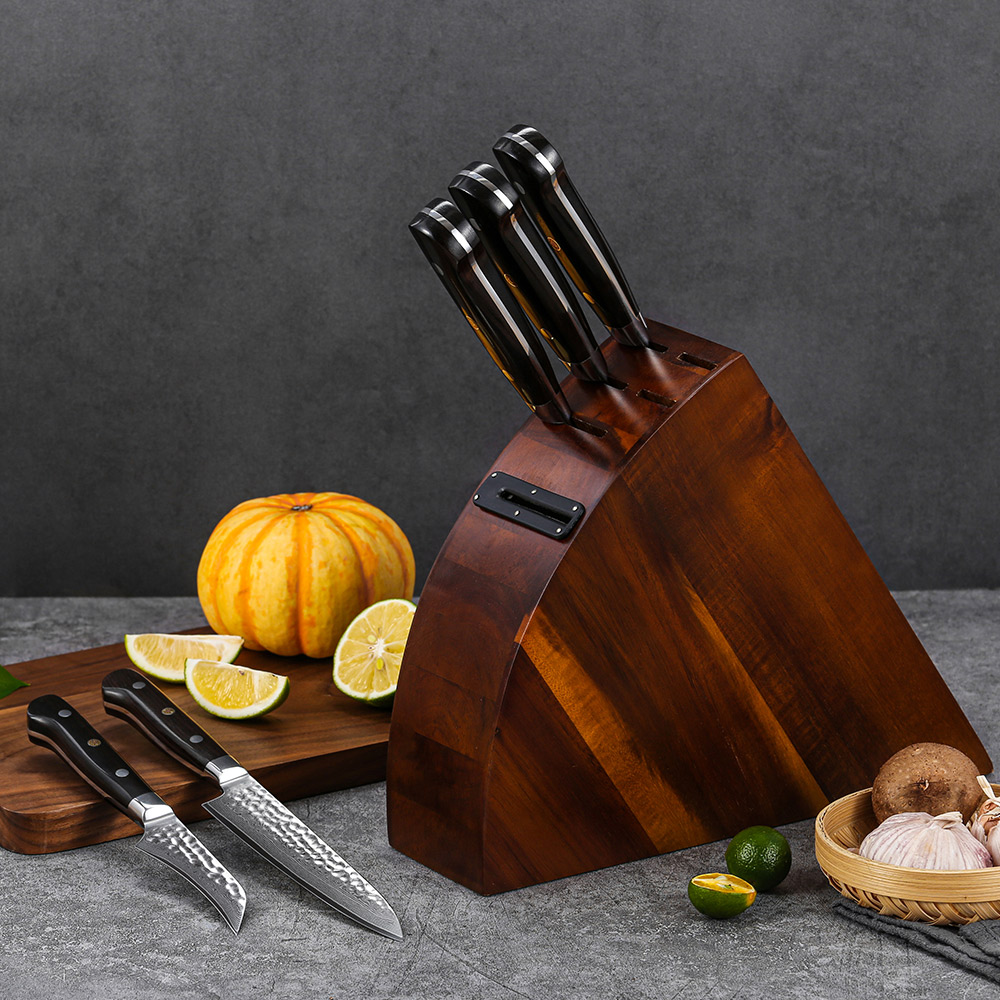
Every kitchen need a decent & sharp knife. A dull knife is a dangerous knife – it requires more pressure to push through food and is therefore more susceptible to slipping, sending the blade out of control and possibly into a nearby hand. Keeping your knives sharp keeps food prep faster, easier, and safer. In this article, we will talk about some knowledge and useful tips to help you understand more about your chef’s knife.
How Knives are Made?
The traditional method of forging a knife required a skilled craftsman to heat a bar of metal and hammer it into the proper shape before sharpening, but modern technology has changed that process significantly. For example, instead of starting as a thick piece of steel and everything but the bolster being hammered down, a Wusthof forged knife starts as a thin steel blank. The center part of the blank is heated, then both ends are pushed in to form a solid bulge of metal that is shaped into a bolster. The knife is then heat-treated for strength and corrosion resistance.
Despite the name, stamped knives are rarely forcibly punched out. Instead, most manufacturers use lasers to cut knife blanks out of rolls of sheet metal. These blanks are then shaped and sharpened, and some manufacturers also put them through heat treatment processes. However, a stamped kitchen knife will rarely go through as intense a heat treatment regimen as a forged knife, which means the final product is a bit less durable.
Forged Knives
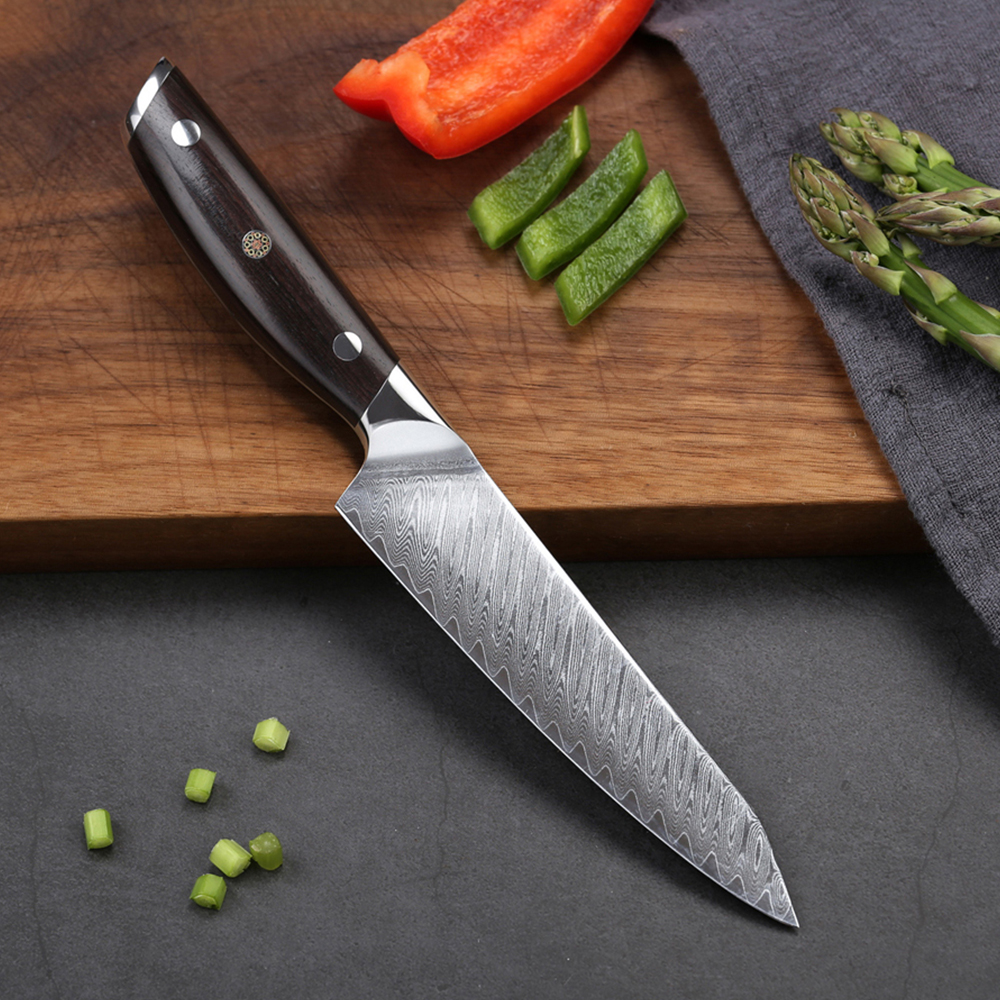
Forged knives are thicker and heavier than their stamped counterparts. Due to the manufacturing process, they also have bolsters that add weight to the knives, which some users feel provides a more well-balanced blade. The bolster can also provide a measure of protection to the user’s fingers, since it provides a natural stop to how far up on the handle the hand goes. Because forged knives generally have full tangs, meaning the metal from the blades runs all the way through the handles as well, rivets are common and the metal is often visible on the tops and bottoms of the handles.
Stamped Knives
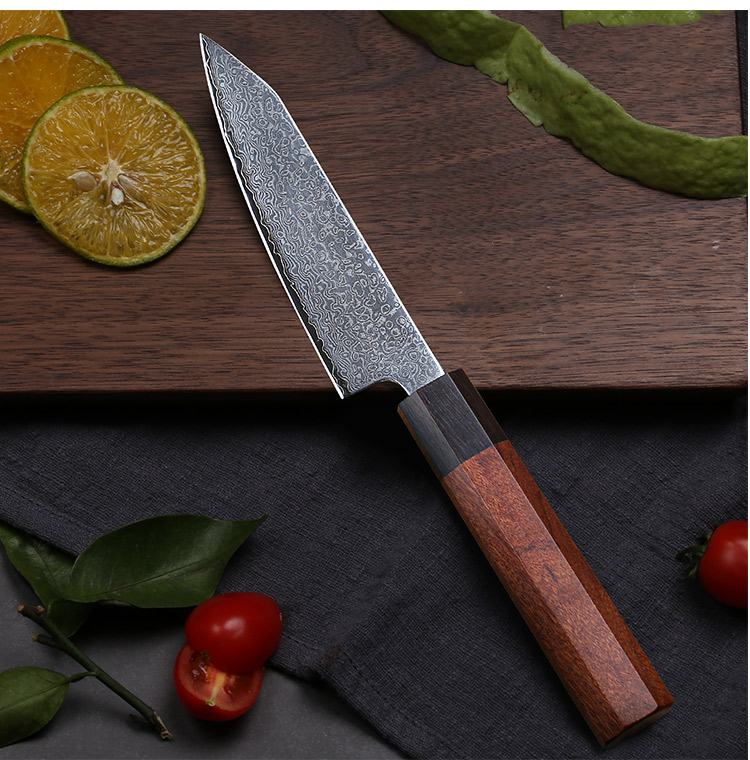
Stamped kitchen knives are thinner overall than their forged counterparts, making them more flexible. Because they are cut from sheets of metal, these knives do not have bolsters. Stamped knives may have a full tang or a partial tang. You can identify the tang length by looking at the top and bottom of the knife handle. If metal shows on the top but not the bottom, it may be a partial tang. Partial tangs are considered by many to be less durable, as the knife handle is often glued on instead of riveted.
Knife Materials
The blades and handles on kitchen knives are made from several different materials, each of which has advantages and disadvantages. Read through this rundown of available materials to decide which belong in your kitchen.
- Carbon steel is a combination of iron and carbon, although it can have certain percentages of other elements as well. Knives made with high carbon steel are made with steel that contains higher amounts of carbon, producing a harder blade. Carbon steel is known for maintaining a sharp edge for a long time while requiring more maintenance than other materials because it can stain and rust.
- Stainless steel is famously rust resistant and low maintenance, which makes it a popular material. However, it doesn’t hold its edge as long as carbon steel. Some manufacturers use high-carbon stainless steel blades, which offer the benefits of both materials.
- Ceramic is another popular blade material because it is lightweight, can maintain an edge, and doesn’t rust. It isn’t as durable as its steel counterparts and can be used only to cut softer ingredients.
Knife Handle Materials
The material a knife handle is made of will determine, in part, how durable the knife is, as well as how easily it can be cleaned. The handles of most commercial kitchen knives are made of either wood or plastic, with variations of the latter sometimes offered as proprietary materials.
Synthetic Knife Handles
One of the most common handle materials is plastic, with a range of formulations available to provide specific properties and advantages. Polyoxymethylene (POM) is a dense, durable plastic that resists fading and discoloration. Polypropylene and ABS plastic are the most common options, and are less durable but more economical than POM.

They are also more lightweight, although that is not always a favorable feature of a knife handle since some chefs prefer the feel of a knife with a handle that slightly outweighs the blade. Thermoplastic elastomers, or rubberized plastics, are sometimes preferred for the grip they provide. These types of plastic, such as Santoprene, are typically not as slippery when wet, which can be safer in a busy kitchen.
These plastic options have many benefits, such as the ability to be textured, lower price points, and the option to combine materials. For example, some knife handles are mostly polypropylene, but might have thermoplastic elastomers along the bottom half of the handle to help improve the grip. Another important option offered by many manufacturers is a variety of colors, which can help prevent cross-contamination or identify which knives belong to each chef or station.
Wooden Knife Handles
The sanitary properties of wood surfaces have long been a point of contention in the commercial kitchen, with concerns the wood’s pores could host bacterial growth. While the science there is debated, health codes that may restrict use of wood in some applications are not, so it is important to know your local regulations before choosing a knife with a wood handle. Where they are allowed, many chefs prefer wooden handles due to their appearance and warmth, and often because of the tradition and nostalgia associated with them.
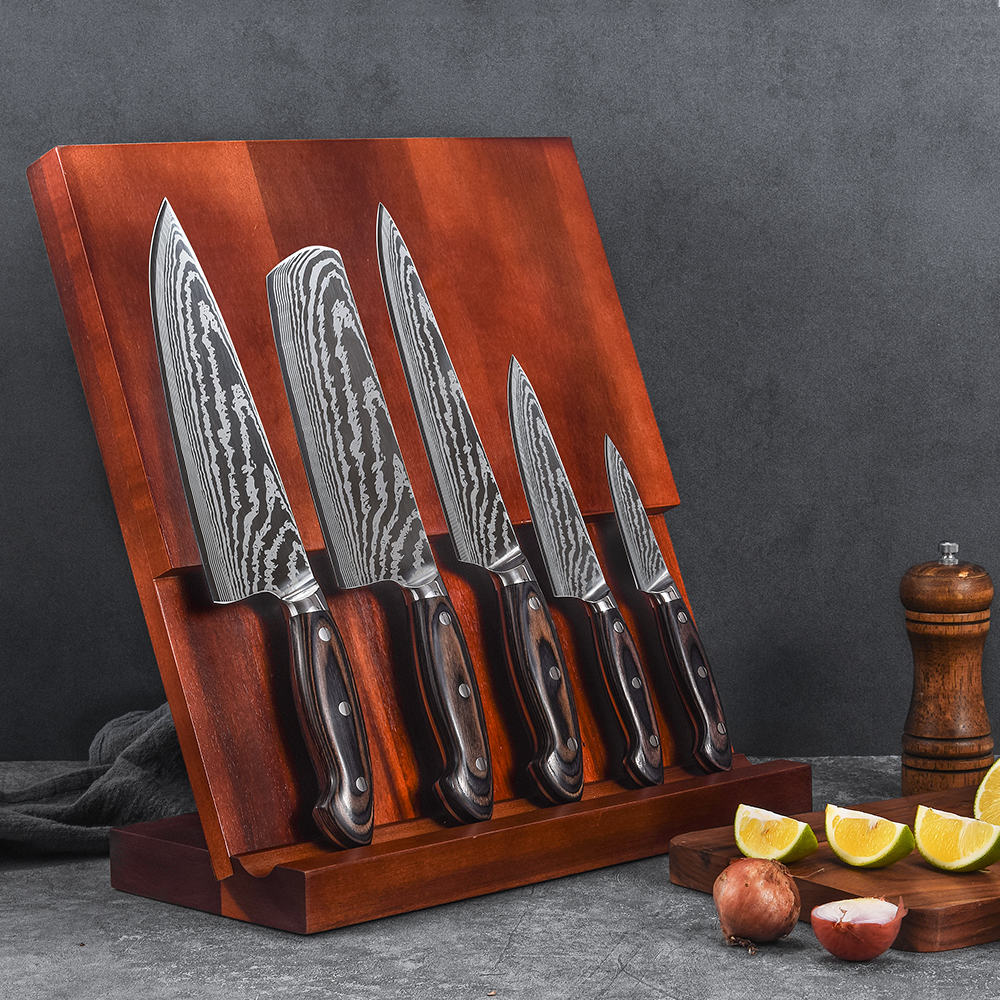
The weight of wood is also considered an advantage, as having a handle slightly heavier than the blade can allow the user more control. Woods such as African blackwood, rosewood, and walnut are common, and sometimes stabilized with resin to help prevent degradation. Wood composites, such as Richlite from Wusthof and Pakkawood from Shun, are often used to provide the same look and feel as wood while being a more long-lasting, durable alternative. Wooden knife handles generally require more specialized care than synthetic handles. Wood is susceptible to becoming damaged by prolonged exposure to hot water, which can cause handles made with it to warp and crack over time. If the wood is not stabilized, it may need to be oiled occasionally to keep it moisturized.
Why Do Carbon Steel Knives Turn Black?
A good knife is often a chef’s most-prized possession, and many chefs have strong opinions about what makes theirs the best. One big difference between knives is the very metal they’re made of. The majority of knives are made from easy-to-maintain stainless steel, but some chefs prefer knives made from carbon steel, which they believe hold an edge longer than stainless steel cutlery. There are also those who claim they’re easier to sharpen. Along with those benefits of carbon steel knives comes a number of caveats, but this type of cutlery can provide years of reliable service given some simple maintenance.
Just like stainless, carbon steel is an alloy of iron, carbon, and a few other elements. Carbon steel knives are more prone to oxidation than stainless steel pieces. Most of us are familiar with oxidation in the form of rust, which carbon steel is particularly prone to if it isn’t kept dry and clean, but carbon steel is also susceptible to another type of oxidation that doesn’t affect stainless steel.
Magnetite is a less destructive type of oxidation that affects just the surface of carbon steel. This process is what’s responsible for developing the carbon steel patina that changes the color of the metal from its shiny chrome-like finish to a dull gray. Any carbon steel connoisseur will be familiar with magnetite as the pattern of streaks, spots, and swirls that a well-used carbon steel blade will develop over time.
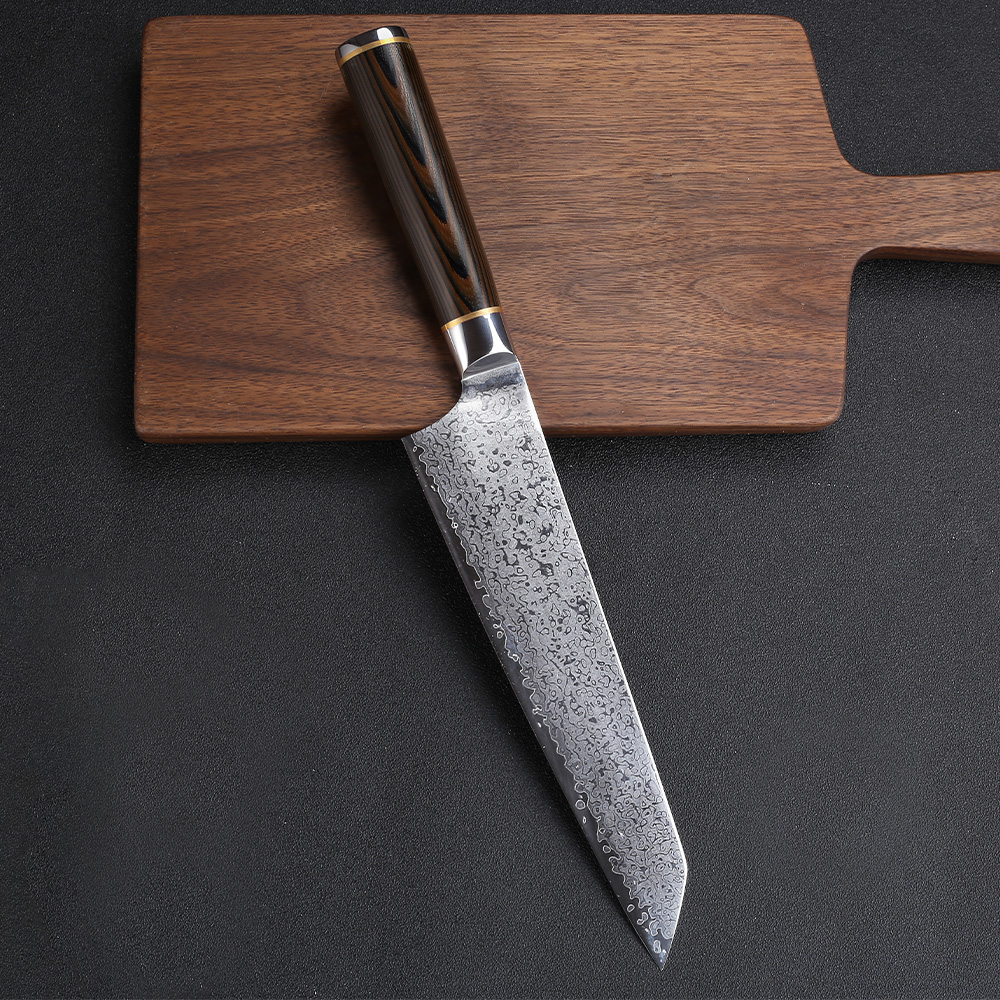
Some folks don’t like the appearance of a carbon steel knife’s patina and assume that it’s harmful to the blade or unsafe for food. Far from detrimental, this patina is harmless, and it actually helps protect the blade from further oxidation, including rust, so many carbon steel experts have developed ways to “force” a carbon steel patina.
A popular way to jumpstart a carbon steel patina is by soaking the blade in hot vinegar for several minutes. This process will give the blade a patina that may otherwise take weeks or months to develop, depending on how often you use your knife. Another method involves rubbing yellow mustard on the blade, often in a particular pattern to decorate the blade.
The jury is out on whether a forced patina is as beneficial as one that develops over time. Researchers at Cook’s Illustrated found that forcing a patina using the vinegar-soaking method actually caused the blade to rust more easily after subsequent uses and gave it a “grippy” finish that created extra drag as it sliced through food. They recommend instead that users continue to care for the knives as they normally would, washing and drying the knife thoroughly after each use, and waiting for a patina to naturally develop.
Caring for a Carbon Steel Knife
To protect the edge of your knife, store it in a knife rack or holder where it will never touch other utensils.
Never store knives in a drawer.
Wash, rinse, and dry your knives immediately after you finish using them.
Never let carbon steel knives rest with debris on them and never let your knives air dry.Doing so will all but guarantee that they’ll rust.
You may force a carbon steel patina by letting your knife soak in vinegar or by rubbing it with mustard, but the value of this approach is the topic of debate.
Some advise applying a light coat of food-safe mineral oil to the blade each time you store it to mitigate the effects of oxygen and moisture in the air.
What accessories can help with cutlery?
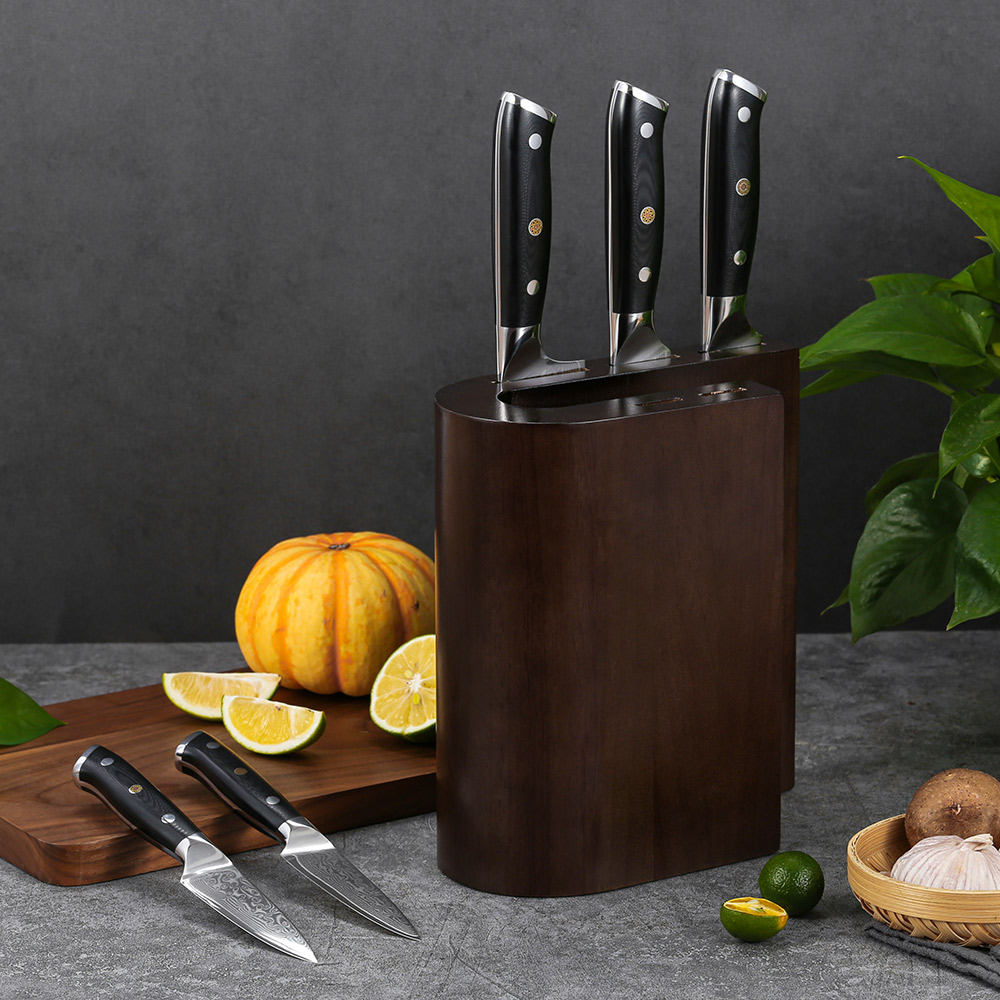
Chuanghe carries a variety of accessories to help operators keep their kitchen running safely and smoothly. Safety equipment, such as knife guards and cut-resistant gloves, ensure users are protected from the dangerously sharp edges of professional-grade knives. Organizational tools, such as knife blocks, knife bags, and knife holders, ensure your knives are always neatly stored when not in use to reduce accident potential.
Related Post: How to Clean and Store Chef Knife?


